Let's talk Boston Terriers
The first official breed to be created in the US, Boston Terriers are intelligent dogs with bags of character. Friendly, outgoing and well-mannered dogs, not for nothing are they known as ‘the American gentleman’—female Boston Terriers were clearly not consulted. Their stylish ‘tuxedo’ markings only add to their dashing effect. Such is the affection for the Boston Terrier in their home state of Massachusetts that they are also an official state symbol.
Official name: Boston Terrier
Other names: Bull Terrier, Boston Bull Terrier, Boxwood, Roundhead
Origins: USA
Tendencia a babear
{score 0 out of 5}Necesidades de aseo
{score 0 out of 5}Nivel de muda de pelo:
{score 0 out of 5}Tendencia a ladrar
{score 0 out of 5}Nivel de energía
{score 0 out of 5}Compatibilidad con otras mascotas
{score 0 out of 5}¿Clima cálido?
{score 0 out of 5}¿Clima frío?
{score 0 out of 5}Apto para vivir en departamento
{score 0 out of 5}Puede quedarse solo
{score 0 out of 5}¿Mascota familiar? *
{score 0 out of 5}
| Macho | Hembra |
|---|---|
| Altura | Altura |
| 38 - 43 | 38 - 43 |
| Peso | Peso |
| 6 - 11 | 6 - 11 |
| Adulto | |
|---|---|
| 10 months to 8 years | |
| Madurez | Adulto mayor |
| 8 to 12 years | 12 to 20 years |
| Bebé | |
| Birth to 2 months | |
Tendencia a babear
{score 0 out of 5}Necesidades de aseo
{score 0 out of 5}Nivel de muda de pelo:
{score 0 out of 5}Tendencia a ladrar
{score 0 out of 5}Nivel de energía
{score 0 out of 5}Compatibilidad con otras mascotas
{score 0 out of 5}¿Clima cálido?
{score 0 out of 5}¿Clima frío?
{score 0 out of 5}Apto para vivir en departamento
{score 0 out of 5}Puede quedarse solo
{score 0 out of 5}¿Mascota familiar? *
{score 0 out of 5}
| Macho | Hembra |
|---|---|
| Altura | Altura |
| 38 - 43 | 38 - 43 |
| Peso | Peso |
| 6 - 11 | 6 - 11 |
| Adulto | |
|---|---|
| 10 months to 8 years | |
| Madurez | Adulto mayor |
| 8 to 12 years | 12 to 20 years |
| Bebé | |
| Birth to 2 months | |
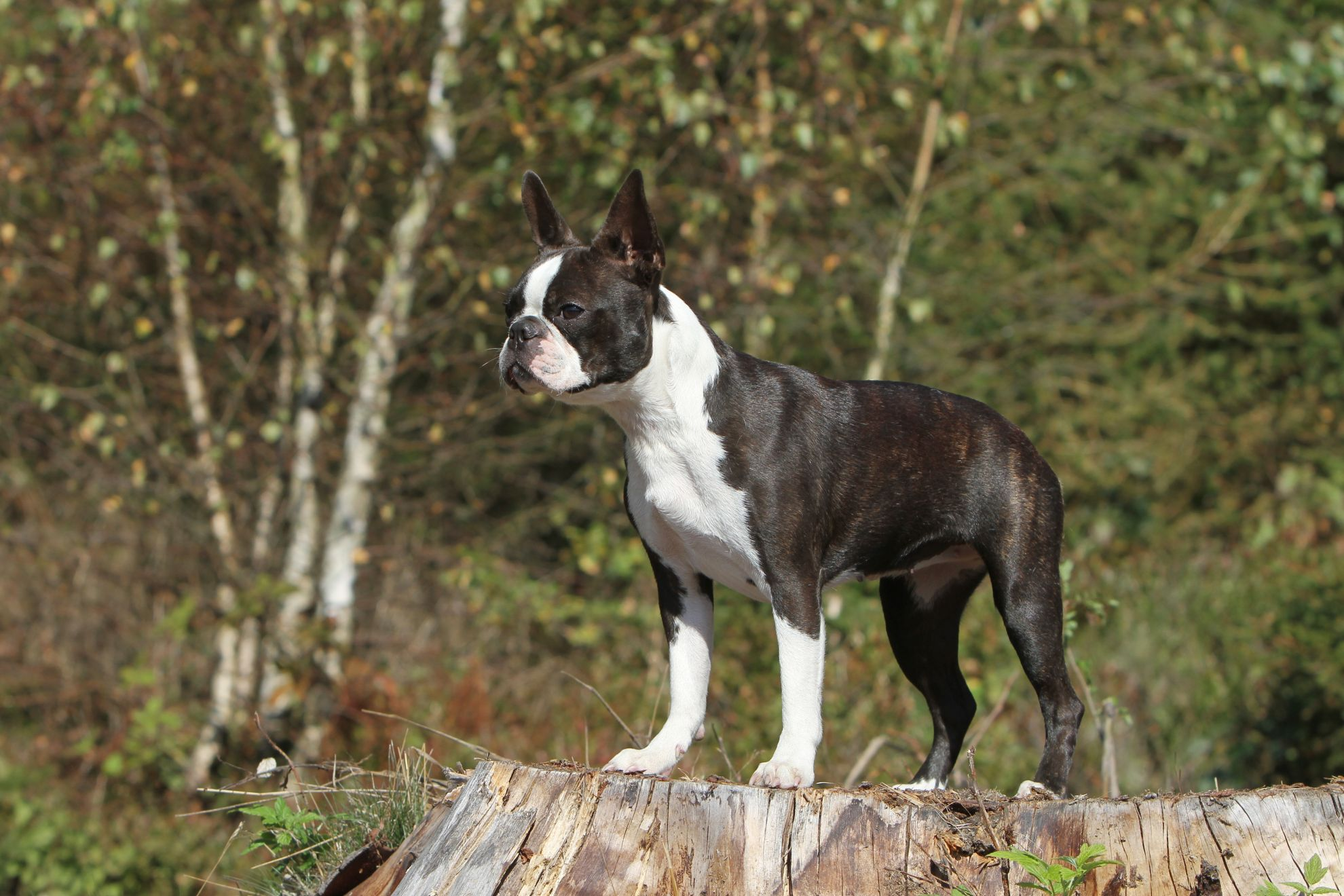
Get to know the Boston Terrier
All you need to know about the breed
Originally bred to be a fighting dog, little more than a century ago, Boston Terriers couldn’t be more different today. Now known for being one of the gentlest breeds, they have a calm and affectionate temperament. In short, they bear no ill will to anyone.
On the contrary, Boston Terriers thrive on being around people, so make an excellent companion. They also do well in most kinds of home set-ups, including apartments, as long as they have a decent amount of exercise. Most Boston Terriers will require at least one or two half-hour walks a day.
Also very smart, Boston Terriers tend to enjoy training. Later, they can go on to do well at canine sports as well (as long as they are not affected by any of the breathing issues sometimes experienced by the brachycephalic breeds). With their good-natured temperament, Boston Terriers make excellent therapy dogs too.
Although relatively small in size, Boston Terriers are strong, muscular and boxy – and yet they move with surprising grace. Usually standing proud and erect, they appear to us humans to have an almost distinguished air about them – and their distinctive markings, which create the impression of a tuxedo, only add to their dapper demeanour.
Sporting a short, smooth coat, the Boston Terrier comes in a variety of colours, ranging from brindle and ‘seal’ to black, and they usually have an attractive white blaze on their face. Also known for their large, pointed ears and big brown eyes, which gives them a particularly appealing expression, it all adds up to a very handsome breed.
Given all this, it’s perhaps no surprise that there is generally a waiting list for a Boston Terrier puppy – but there’s another reason for that too. Litters are often quite small – and even one puppy is not uncommon. So, if you’re planning on getting a young Boston Terrier, it’s best to get your name down as early as possible. As always, be sure to buy from a reputable breeder too.
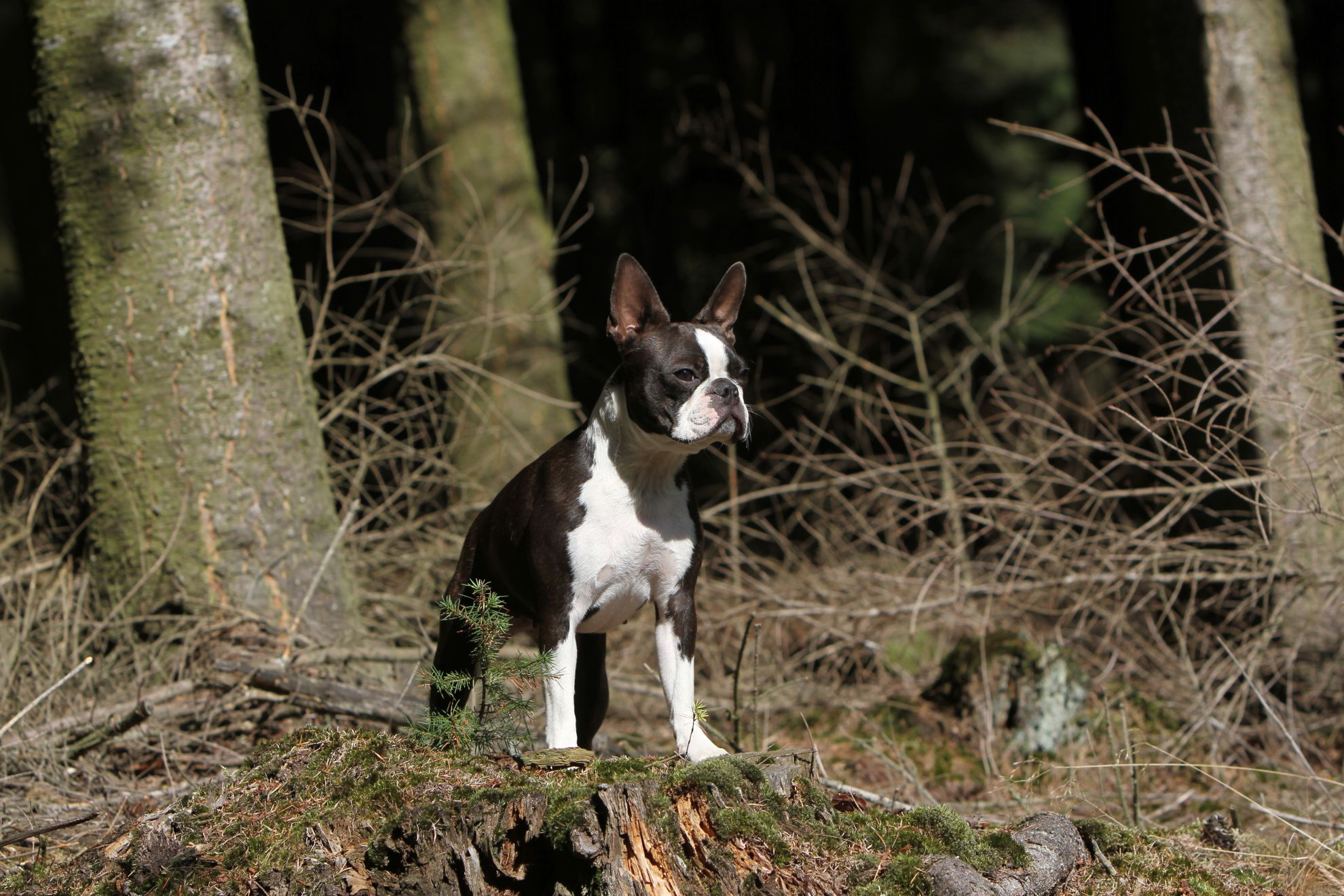
2 facts about Boston Terriers
1. A mighty mascot
Not only has the Boston Terrier been a state symbol of Massachusetts since 1979, in their home city of Boston they have been the official mascot of the university for almost a hundred years. Needless to say, the people there take great pride in their canine heritage.
2. What's in a name ?
Despite being called Boston Terriers, they are not technically terriers at all. If you check out the British or American Kennel Club websites you will spot that they are not in the ‘Terrier’ group but in the ‘Utility’ or ‘Non-sporting’ category. The reason for this is because the history of the Boston Terrier breed is so diverse.

History of the breed
To discover the origins of the Boston Terrier, we have to go back to the England of the late-1800’s. At that time, the practice of dog-fighting was sadly all the rage, and it was hoped that by crossing the Bulldog with the now-extinct English White Terrier, a more ferocious fighter would result. Fortunately for the hero of our story, a dog named Judge, his fate was a rather happier one.
Though both strong and muscular, Judge was bought by an American – for reasons that we know not – and taken back to Boston. Then, in 1870, a man called Robert C. Hooper decided to buy him – reputedly because Judge reminded him of a dog he’d had in his childhood. Eventually, Hooper went on to breed Judge (known later as Hooper’s Judge) with a small white female dog named Gyp – and the rest, as they say, is history.
Through selective breeding, the ‘Roundhead’ or ‘Bull Terrier’, as they were known back then, developed into the smaller and gentler dog that we know and love today. Eventually, they were also renamed to the Boston Terrier in honour of their home city.
Already popular by the late-1800’s, in 1891 the Boston Terrier Club of America was created. Two years later, the breed was registered with the American Kennel Club – making them the first of the organisation’s ‘made-in-America breeds’.
From head to tail
Physical characteristics of Boston Terriers
1.Ears
2.Head
3.Body
4.Colouring
5.Coat
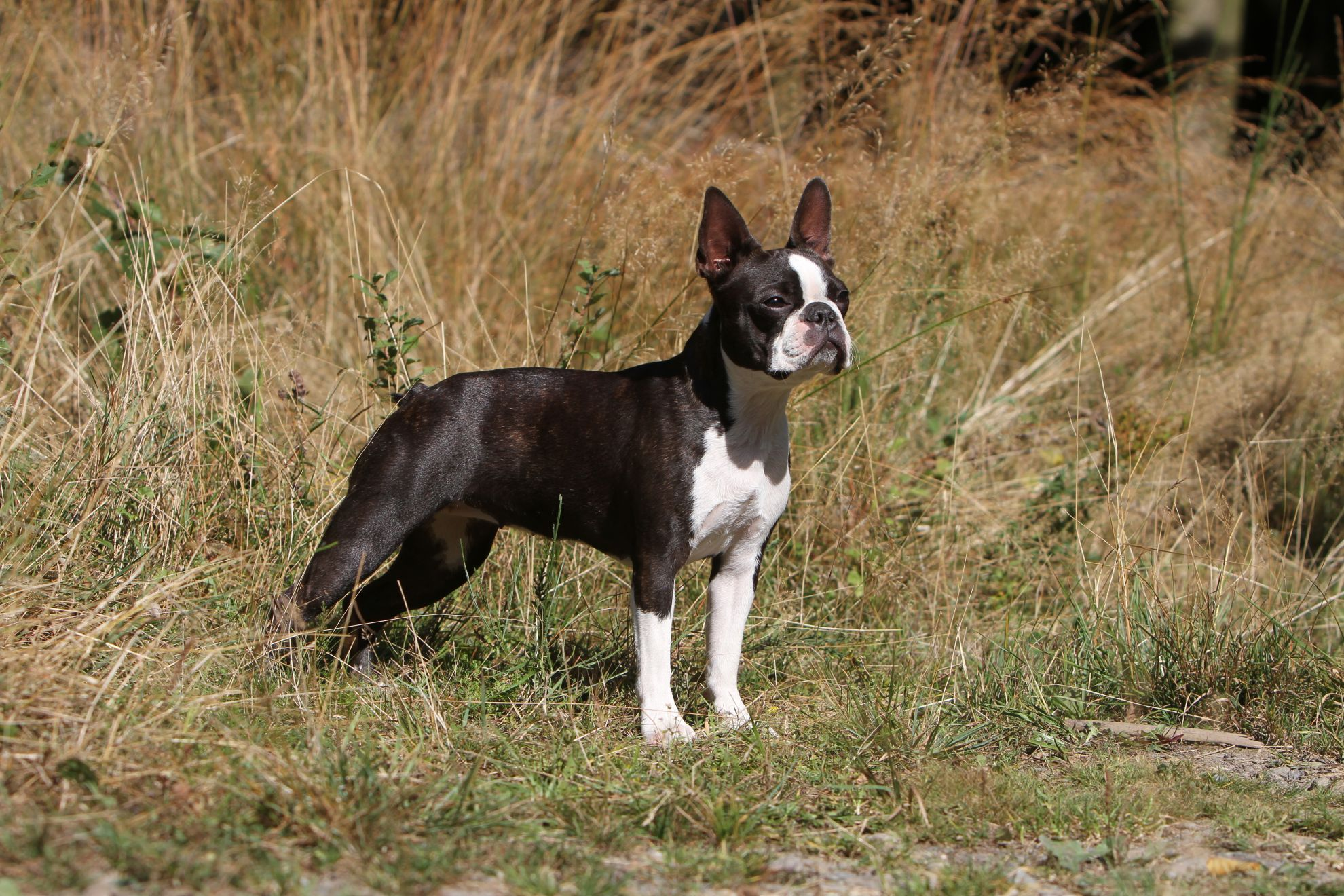
Things to look out for
From specific breed traits to a general health overview, here are some interesting facts about your Boston Terrier
They can occasionally be prone to breathing difficulties
Due to being a flat-faced breed – otherwise known as ‘brachycephalic’ – the Boston Terrier can sometimes struggle with their breathing. For that reason, it’s especially important to buy from a reputable breeder. Also, the Boston Terrier does not do well in hot weather as this can exacerbate the issue. Instead, it’s best to keep them out of the heat as far as possible and time their walks for either the morning or evening. On a related note, the Boston Terrier can also suffer from a condition known as ‘reverse sneezing’, which can result in wheezing. Staying observant means staying on top of these issues.
The Boston Terrier can also experience eye problems
Given the prominence of their beautiful brown eyes, this is a breed that can be more at risk of irritation, conjunctivitis or corneal lesions. So, it may be wise to carry some saline eye drops with you, just in case. In addition, the Boston Terrier can be susceptible to more serious eye complaints, too, such as cataracts (there is a hereditary form), corneal ulcers and glaucoma. Boston Terriers may also suffer from primary glaucoma, so any sudden onset of a red or painful eye should be immediately investigated. However, responsible breeders are able to screen for many conditions—and your vet will always be on-hand to help if needed.
It’s important to look out for lumps and bumps
As the Boston Terrier can be susceptible to a health problem known as ‘mast cell tumours’, it’s a good idea to keep a close eye on any changes in their body. Normally, mast cells are produced as part of the dog’s natural defence system. Sometimes, however, these can reproduce too rapidly and become cancerous—which normally results in lumps. The good news is that early detection, and subsequent surgery, can often provide a solution. The moral of the story is to consult your vet at the first sign of anything unusual.
Healthy diet, healthier dog
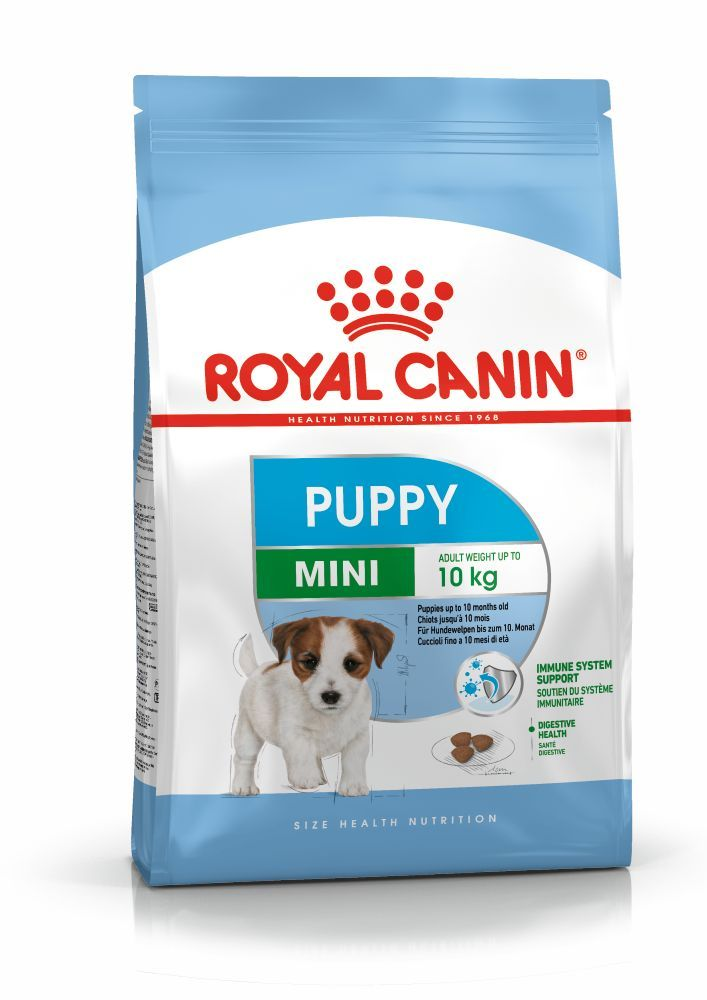
When choosing food for a Boston Terrier, there are many factors to consider: their age, lifestyle, activity level, physiological condition, and health including potential sickness or sensitivities. Food provides energy to cover a dog’s vital functions, and a complete nutritional formula should contain an adjusted balance of nutrients to avoid any deficiency or excess in their diet, both of which could have adverse effects on the dog.
Clean and fresh water should be available at all times to support good urinary regularity. In hot weather and especially when out exercising, bring water along for your dog’s frequent water breaks.
The following recommendations are for healthy animals. If your dog has health problems, please consult your veterinarian who will prescribe an exclusively veterinary diet.
A Boston Terrier puppy’s requirements, in terms of energy, protein, minerals and vitamins, are much greater than those of an adult dog. They need energy and nutrients to maintain their body, but also to grow and build it. Until they are 10 months old, a Boston Terrier puppies’ immune system develops gradually. A complex of antioxidants - including vitamin E - can help support their natural defences during this time of big changes, discoveries, and new encounters. Their digestive functions are different from an adult Boston Terrier’s, too: their digestive system is not mature yet so it’s important to provide highly digestible proteins that will be effectively used. Prebiotics such as fructo-oligosaccharides, support digestive health by helping balance the intestinal flora, resulting in good stool.
Similarly, a puppy’s teeth – starting with the milk teeth, or first teeth, then the permanent teeth – are an important factor that needs to be taken into account when choosing the size, form, and hardness of kibble. This intense growth phase also means high energy needs, so the food must have a high energy content (expressed in Kcal/100g of food), while concentrations of all other nutrients will also be higher than normal in a specially formulated growth food. It is recommended to split the daily allowance into three meals until they are six months old, then to switch to two meals per day.
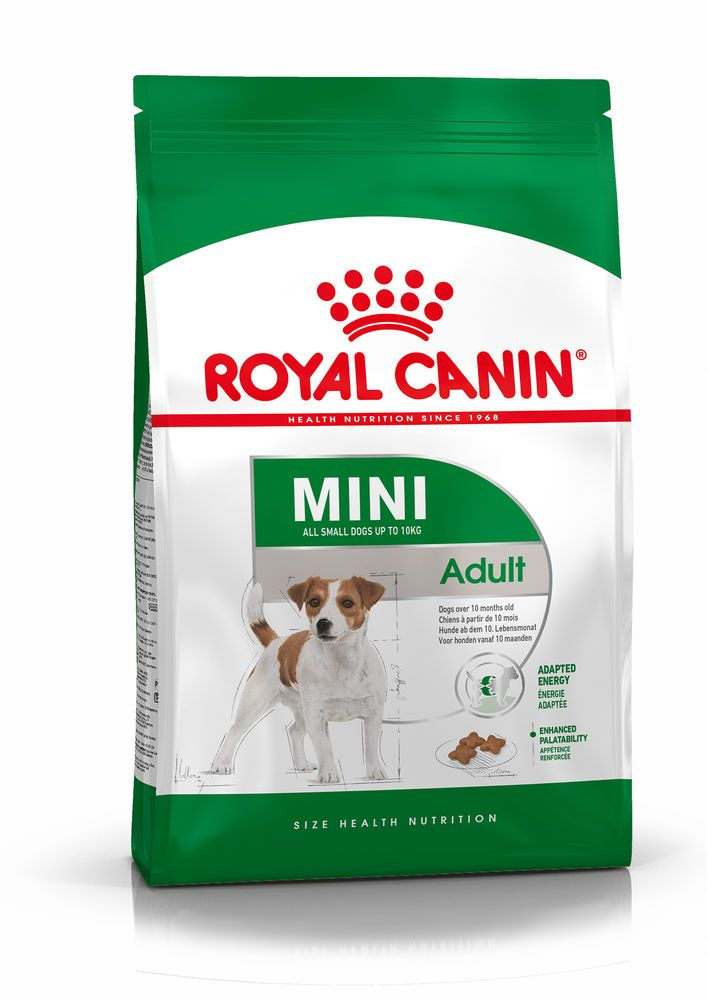
The main nutritional goals for adult Boston Terriers are:
Maintaining an ideal body weight by using highly digestible ingredients and keeping the fat content at a sensible level.
Preserving the health and beauty of the skin and coat with the enriched addition of essential fatty acids (especially EPA-DHA), essential amino acids, and B vitamins.
At adult age, small breed dogs are exposed to oral and dental disorders, more precisely, accumulation of dental plaque and tartar. The Boston Terrier’s teeth and jaws need a lot of protection. A kibble shape and a texture designed to promote chewing can help in slowing down the formation of dental plaque, and a formula containing calcium chelators can help reduce tartar formation, hence helping to support daily oral hygiene. Small breed dogs are well known for being fussy eaters. Exclusive formula and flavourings, as well as a kibble size with a special texture, will stimulate their appetite. Small breed dogs are prone to urinary stones; a diet that supports a healthy urinary system is recommended.
For Boston Terriers living mainly indoors, highly digestible proteins, an appropriate fibre content, and very high quality carbohydrate sources will help reduce faecal smell and volume. Because an indoor lifestyle often means less exercise, an adapted calorie content, which meets the reduced energy needs, and a diet that contains L-carnitine, which promotes fat metabolism, can help maintain an ideal weight. It is important to avoid feeding them human foods or fatty snacks. Instead, reward your dog with kibble taken from their daily meal allowance, and strictly follow the feeding guidelines written on the package in order to prevent excessive weight gain.
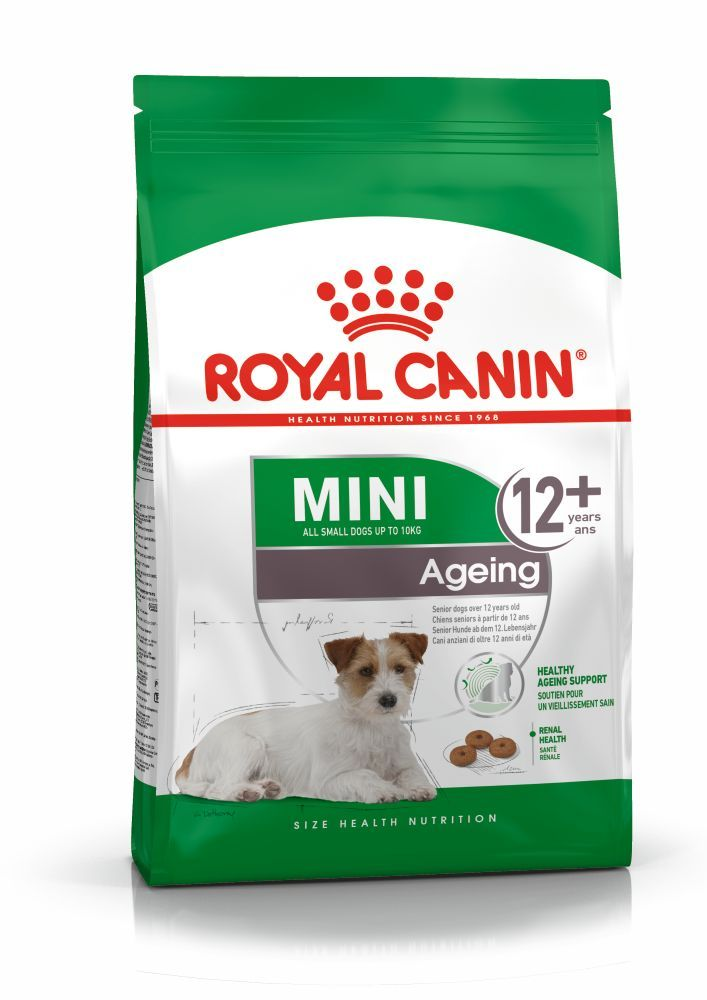
After 8 years old, Boston Terriers start facing the first signs of ageing. A formula enriched with antioxidants will help maintain their vitality and an adapted phosphorus content will support their renal system. Ageing is also accompanied by the modification of digestive capacities and particular nutritional requirements, so food for older Boston Terriers should have the following characteristics:
Higher vitamin C and E content. These nutrients have antioxidant properties, helping to protect the body’s cells against the harmful effects of the oxidative stress linked to ageing.
High-quality protein. Contrary to a widely held misconception, lowering the protein content in food brings little benefit in limiting kidney failure. In addition, older dogs are less efficient at using dietary protein than younger dogs. Reducing the phosphorus content is a good way of slowing down the gradual deterioration of kidney function.
A higher proportion of the trace elements iron, zinc, and manganese to help maintain the good condition of the skin and coat.
A higher quantity of polyunsaturated fatty acids (omega-3 and omega-6 fatty acids) to maintain the quality of the coat. Dogs can normally produce these fatty acids, but ageing can affect this physiological process.
A higher quantity of polyunsaturated fatty acids to help maintain the quality of the coat. Dogs can normally produce these fatty acids, but ageing can affect this physiological process.
As they age, dogs increasingly suffer from teeth problems. To ensure they continue to eat in sufficient quantities, the size, shape, and texture of their kibble need to be tailored to their jaw. An adapted kibble shape may help reduce the rate of food intake to help your dog maintain a healthy body weight.
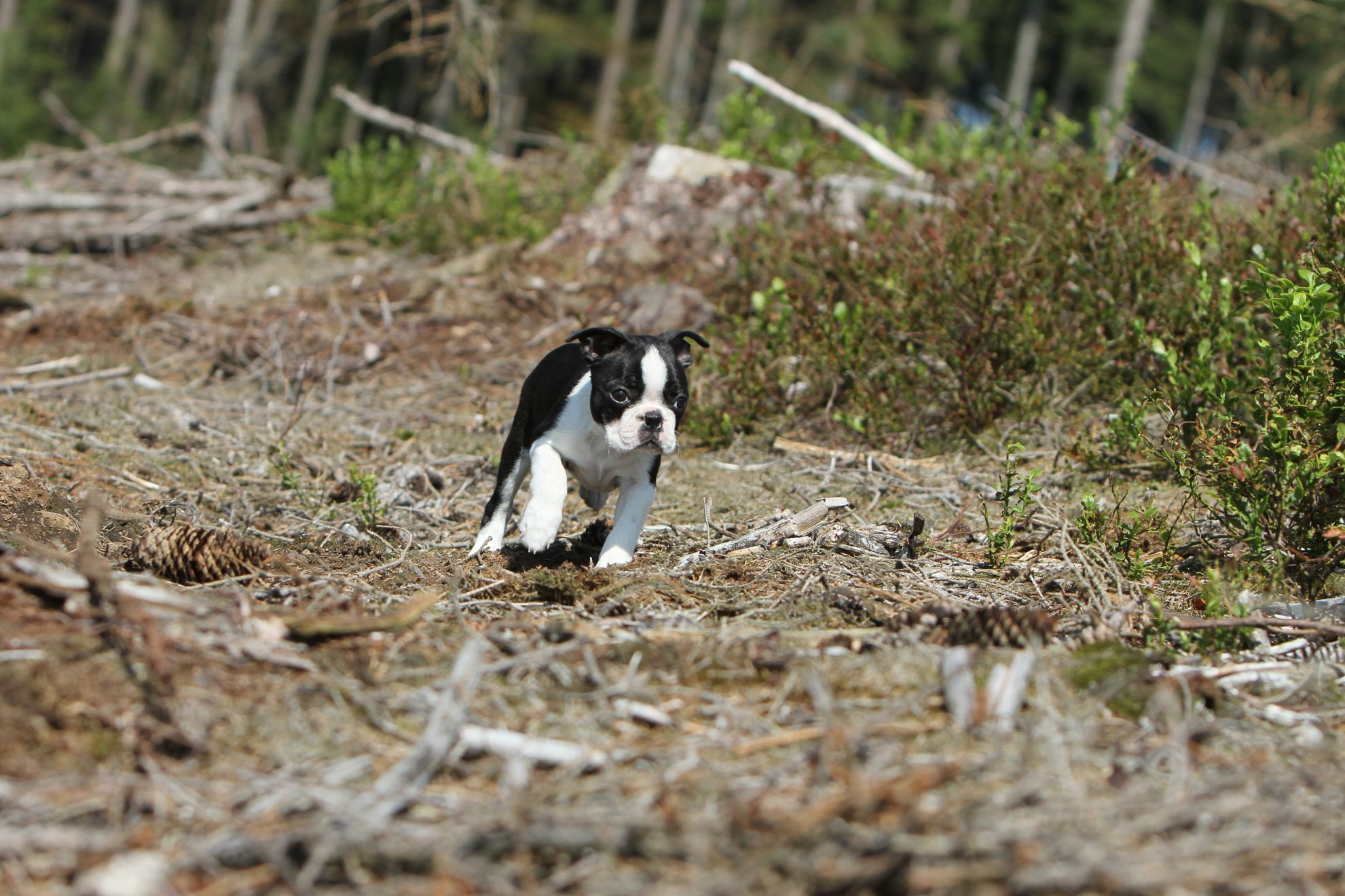
Caring for your Labrador Retriever
Grooming, training and exercise tips
One of the most common questions about the Boston Terrier is how much exercise do they need? At the very least, they should have one or two decent daily walks of around half an hour, though some will appreciate a run. All of this will help to prevent any weight gain and keep them mentally stimulated – important for this intelligent breed. As the Boston Terrier is also quite playful, and enjoys a good game, it’s worth investing in a few toys, too, and especially a ball. One last thing to bear in mind: because they are a brachycephalic dog, meaning they can be prone to breathing difficulties, exercise can be a challenge for some. Also, as this is a breed that does not do well in extremes of hot or cold weather, walks should be timed accordingly.
With their short, smooth coats, the Boston Terrier’s grooming requirements are fairly low-maintenance compared with some other breeds. Also, unless they’ve been rolling in the mud, baths should only be needed occasionally. However, as the Boston Terrier can be prone to shedding, a weekly brushing using a grooming mitt will help to get rid of any loose hair. In addition, because their eyes are so large and prominent, it’s a good idea to wash their faces regularly and to check for any signs of redness or irritation. Nails should be clipped as often as needed (a vet can show you how to do this safely), ears checked weekly and teeth brushed daily, ideally, but at least two or three times a week. To maintain a healthy, shiny coat, Labrador Retrievers should be brushed weekly, and even more often during seasonal shedding periods. They may need occasional baths to keep them clean, particularly after outdoor activities. And if they were anywhere near a lake or pond! Labradors, like all dogs - and people - need regular dental care, including at-home teeth brushing and professional cleanings. Maintaining good dental hygiene is important for your Lab’s overall long-term health. Nails should be clipped as often as needed and ears checked weekly if they’ll let you.
Very intelligent animals, and therefore quick learners, the Boston Terrier is generally an easy dog to train. As always, it’s best to start them off early with puppy classes, as that will help them to become relaxed around other dogs. This is important for the Boston Terrier as, although they are not at all aggressive animals, males can occasionally be a bit scrappy around other dogs. One other thing to bear in mind with the Boston Terrier’s training is that, although they can have a stubborn streak, they are also quite sensitive. Therefore, they will always respond best to positive, reward-based methods. Once the basic commands are in the bag, Boston Terriers can often go on to excel in canine sports, such as agility, obedience and tracking, as long as they don’t suffer with any of the breathing problems associated with the brachycephalic breeds. They make good therapy dogs too.
One of the most common questions about the Boston Terrier is how much exercise do they need? At the very least, they should have one or two decent daily walks of around half an hour, though some will appreciate a run. All of this will help to prevent any weight gain and keep them mentally stimulated – important for this intelligent breed. As the Boston Terrier is also quite playful, and enjoys a good game, it’s worth investing in a few toys, too, and especially a ball. One last thing to bear in mind: because they are a brachycephalic dog, meaning they can be prone to breathing difficulties, exercise can be a challenge for some. Also, as this is a breed that does not do well in extremes of hot or cold weather, walks should be timed accordingly.
With their short, smooth coats, the Boston Terrier’s grooming requirements are fairly low-maintenance compared with some other breeds. Also, unless they’ve been rolling in the mud, baths should only be needed occasionally. However, as the Boston Terrier can be prone to shedding, a weekly brushing using a grooming mitt will help to get rid of any loose hair. In addition, because their eyes are so large and prominent, it’s a good idea to wash their faces regularly and to check for any signs of redness or irritation. Nails should be clipped as often as needed (a vet can show you how to do this safely), ears checked weekly and teeth brushed daily, ideally, but at least two or three times a week. To maintain a healthy, shiny coat, Labrador Retrievers should be brushed weekly, and even more often during seasonal shedding periods. They may need occasional baths to keep them clean, particularly after outdoor activities. And if they were anywhere near a lake or pond! Labradors, like all dogs - and people - need regular dental care, including at-home teeth brushing and professional cleanings. Maintaining good dental hygiene is important for your Lab’s overall long-term health. Nails should be clipped as often as needed and ears checked weekly if they’ll let you.
Very intelligent animals, and therefore quick learners, the Boston Terrier is generally an easy dog to train. As always, it’s best to start them off early with puppy classes, as that will help them to become relaxed around other dogs. This is important for the Boston Terrier as, although they are not at all aggressive animals, males can occasionally be a bit scrappy around other dogs. One other thing to bear in mind with the Boston Terrier’s training is that, although they can have a stubborn streak, they are also quite sensitive. Therefore, they will always respond best to positive, reward-based methods. Once the basic commands are in the bag, Boston Terriers can often go on to excel in canine sports, such as agility, obedience and tracking, as long as they don’t suffer with any of the breathing problems associated with the brachycephalic breeds. They make good therapy dogs too.
7/7
All about Boston Terriers
All about Boston Terriers
Although Boston Terriers are very friendly, people-orientated dogs, and prefer to have company, they can be left alone for short periods of time. That said, another trait of the Boston Terrier is that they can also suffer from separation anxiety if left for too long. So, it’s best to leave them as little as possible.
Boston Terriers make good little watch dogs as they won’t hesitate to sound the alarm if a stranger enters their territory or they perceive there to be a threat. However, under normal circumstances, they don’t tend to bark any more than average.
Suggested Breeds
Read more on this topic
Sources
- Veterinary Centers of America https://vcahospitals.com/;
- Royal Canin Dog Encyclopaedia. Ed 2010 and 2020
- Banfield Pet Hospital https://www.banfield.com/
- Royal Canin BHN Product Book
- American Kennel Club https://www.akc.org/
Like & share this page